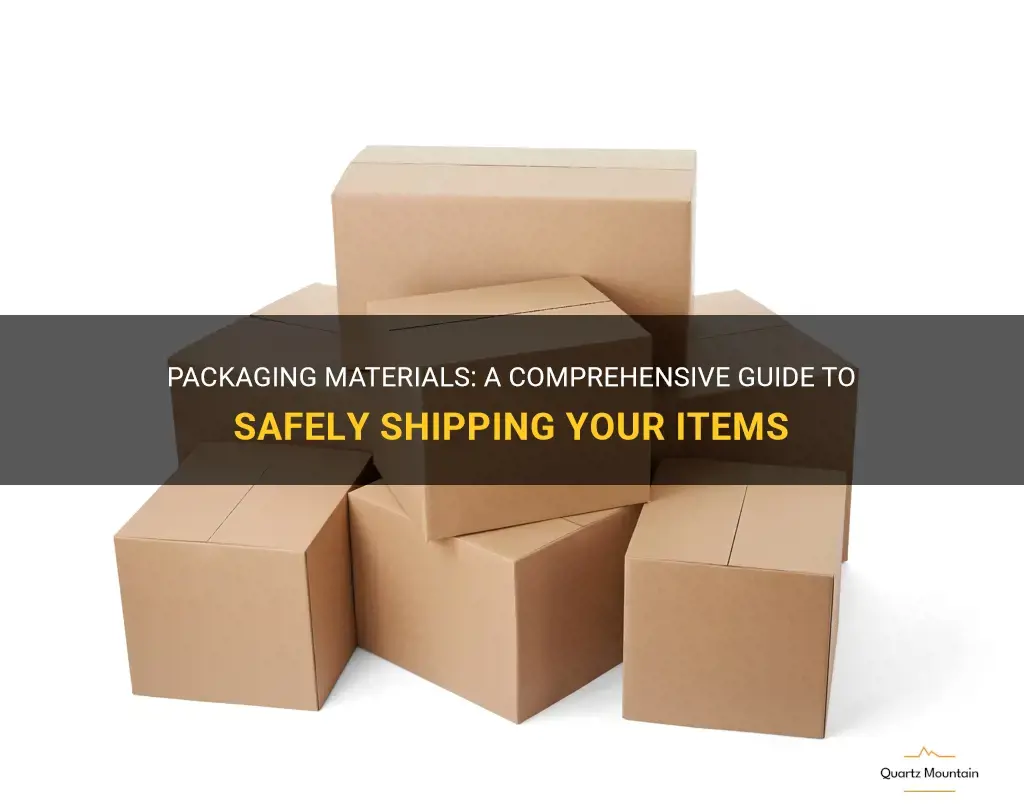
In a world filled with online shopping and global shipping, it has become more important than ever to embrace the art of packaging. From fragile items to oversized goods, ensuring that your packages arrive safely and intact is essential. That's why we've created this comprehensive guide to packaging materials, offering you tips, tricks, and insights on how to ship your items with confidence. Whether you're a small business owner or simply someone who wants to protect their purchases, join us as we delve into the world of packaging materials and discover the secrets to safely shipping your items.
What You'll Learn
- What materials can I use to pack a package securely?
- Are there any specific packaging materials that are recommended for fragile items?
- Can I use everyday household items to pack a package, or do I need to purchase specific packaging materials?
- Are there any eco-friendly alternatives to traditional packaging materials?
- How do I determine the right size box or envelope to use for packing a package?

What materials can I use to pack a package securely?
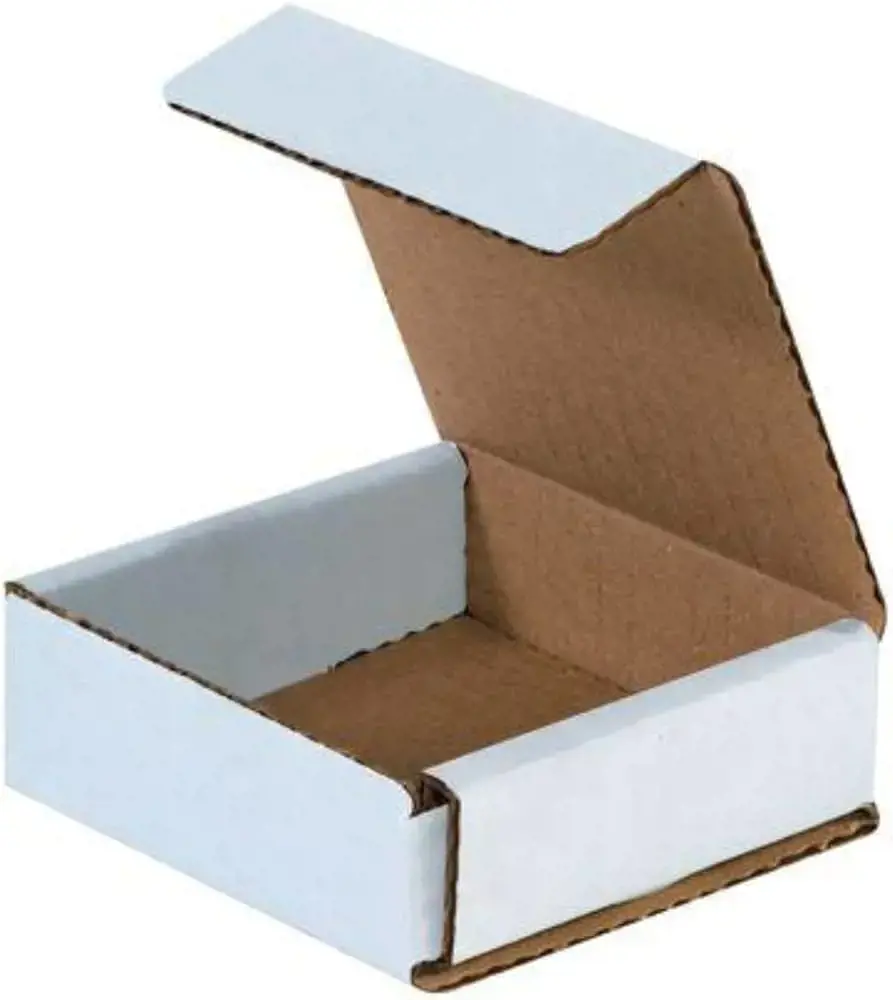
When it comes to packing a package securely, it is important to choose the right materials to ensure that your items arrive at their destination intact. The materials you use should provide cushioning, protection, and stability. There are several materials that can be used to pack a package securely, and the choice depends on the nature of the items being packed. In this article, we will explore some of the commonly used materials for packing and how they can be used effectively.
- Bubble Wrap: Bubble wrap is a versatile and effective packing material that provides cushioning and protection. It consists of small air-filled bubbles that absorb shock and prevent breakage during transit. Bubble wrap is ideal for fragile items such as glassware, electronics, and delicate artworks. Simply wrap the item in bubble wrap and secure it with packing tape.
- Packing Peanuts: Packing peanuts are lightweight, inexpensive, and can be used to fill empty spaces in a package. They provide cushioning and prevent movement of items during transit. Packing peanuts are particularly useful for filling voids in boxes that contain multiple items or irregularly shaped items. However, it is important to note that packing peanuts can be messy, so it is advisable to place items in a plastic bag before adding the peanuts to the package.
- Air Pillows: Air pillows are another popular choice for secure packaging. They are inflatable plastic cushions that provide cushioning and help to absorb shocks during transit. Air pillows are lightweight, easy to use, and can be inflated according to the desired level of cushioning. They are particularly useful for protecting fragile items such as ceramics, electronics, and small appliances.
- Foam Inserts: Foam inserts are custom-cut pieces of foam that are designed to fit the shape of specific items. They provide ultimate protection and stability for delicate or irregularly shaped items. Foam inserts can be used to secure items in place within a box, preventing them from shifting during transit. They are commonly used for packing items such as electronics, medical equipment, and precision instruments.
- Cardboard Inserts: Cardboard inserts are sturdy, inexpensive, and can be easily cut to size. They are commonly used to separate and protect individual items within a package. For example, if you are packing multiple bottles of wine, you can use cardboard inserts to create compartments and prevent the bottles from hitting each other. Cardboard inserts can also be used to reinforce the corners and edges of a box, providing extra stability and protection.
In addition to the above materials, it is important to use high-quality packing tape to secure the package and prevent it from coming apart during transit. It is also advisable to use a sturdy box that is appropriate for the size and weight of the items being packed.
In conclusion, packing a package securely requires the use of the right materials to provide cushioning, protection, and stability. Bubble wrap, packing peanuts, air pillows, foam inserts, and cardboard inserts are some of the commonly used materials for secure packaging. The choice of material depends on the nature of the items being packed. By using the appropriate materials, you can ensure that your package arrives at its destination safely and without any damage.
Essential Items to Pack for Inpatient Mental Health Treatment
You may want to see also

Are there any specific packaging materials that are recommended for fragile items?
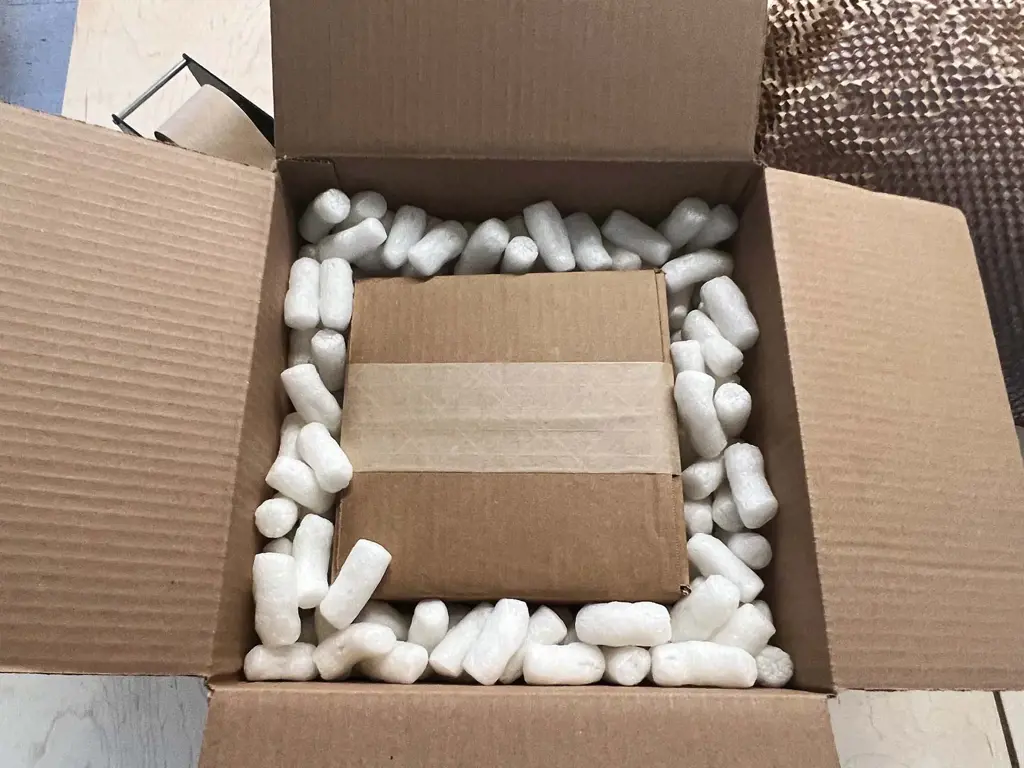
When it comes to shipping and moving fragile items, it is essential to use the right packaging materials to ensure their safe arrival. Fragile items such as glassware, electronics, and delicate decorations require extra care to prevent damage during transit. In this article, we will discuss some packaging materials that are recommended for fragile items.
- Bubble Wrap: Bubble wrap is an excellent packaging material for fragile items due to its cushioning properties. It consists of small air-filled bubbles that provide protection against impact and shock. Wrap the fragile item in several layers of bubble wrap, ensuring that all sides are adequately covered. Secure the wrap with tape to keep it in place.
- Packing Peanuts: Packing peanuts are small foam pieces that can be used to fill empty spaces inside a box. They act as a cushion, preventing the fragile item from moving and shifting during transit. Make sure to use enough packing peanuts to create a snug fit within the box.
- Foam Sheets: Foam sheets are another popular packaging material for fragile items. They offer protection against scratches and impact. Wrap the fragile item with foam sheets before placing it inside a box. You can also cut the foam sheets into custom shapes to fit around the item securely.
- Air Pillows: Air pillows are inflatable cushions that can provide additional protection for fragile items. They are lightweight and can be easily placed around the item inside a box. Air pillows are versatile and can fill up empty spaces, preventing movement and keeping the fragile item in place.
- Corrugated Cardboard: Corrugated cardboard is a sturdy packaging material that can be used to create custom boxes for fragile items. It provides rigidity and durability, ensuring that the item is well-protected during transit. Use thick cardboard for extra strength and consider double boxing fragile items for added protection.
- Fragile Labels: In addition to using the right packaging materials, it is crucial to label your boxes as fragile. This will alert the shippers and movers to handle the package with care. Place the fragile labels on all sides of the box, along with any other necessary shipping labels.
It is also essential to consider the size and weight of the fragile item when choosing packaging materials. Large and heavy items may require additional reinforcement, such as wooden crates or pallets, to ensure their safe transport.
In conclusion, when packing fragile items, it is recommended to use materials such as bubble wrap, packing peanuts, foam sheets, air pillows, and corrugated cardboard. These packaging materials provide cushioning and protection against impact and shock. Additionally, labeling the box as fragile will help ensure careful handling during transit. By taking these precautions, you can increase the chances of your fragile items arriving safely at their destination.
Essential Items to Pack for a Memorable Dirty Weekend Getaway
You may want to see also

Can I use everyday household items to pack a package, or do I need to purchase specific packaging materials?
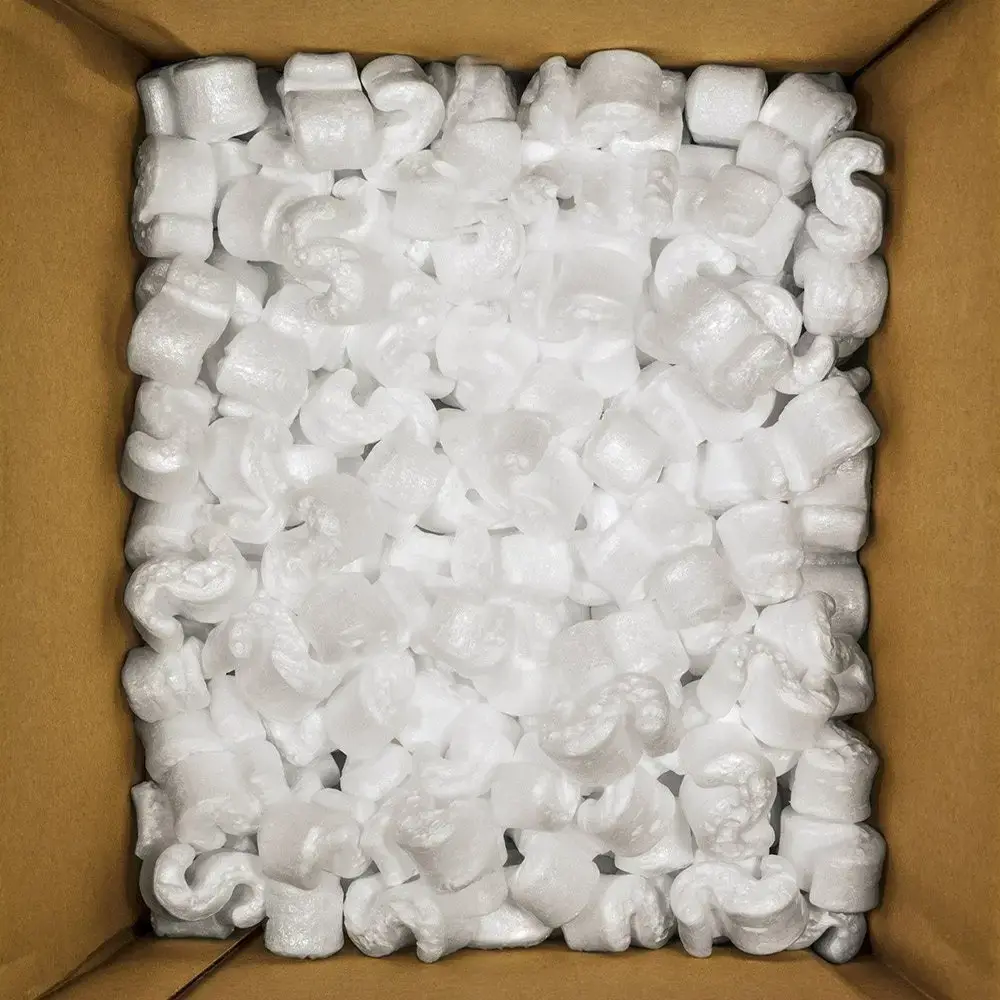
When it comes to shipping packages, whether it's for personal reasons or business purposes, finding the right packaging materials is crucial to ensure that your items arrive safely at their destination. Many people wonder if they can use everyday household items to pack a package or if they need to purchase specific packaging materials. While it is possible to use some household items for packaging, it is generally recommended to use proper packaging materials to ensure the best protection for your items.
Using proper packaging materials has several advantages over using everyday household items. First and foremost, packaging materials such as bubble wrap, packing peanuts, and foam sheets are specifically designed to provide cushioning and protection for fragile items. These materials are made from materials like polyethylene and polyurethane, which have excellent shock-absorbing properties. Using these materials will greatly reduce the risk of your items getting damaged during transit.
Furthermore, using proper packaging materials also allows for better organization and secure packaging. Items like boxes, tape, and labels are specifically designed for shipping purposes. They come in various sizes and shapes to accommodate different types of items. Using the right kind of box will ensure that your items fit properly and are not packed too loosely or tightly, which can lead to damage during transit. Additionally, using strong packing tape and proper labels will ensure that your package stays securely sealed and arrives at the correct destination.
That being said, there are some household items that can be used as additional packing materials. For example, old newspapers or magazines can be used to wrap items for added protection. Plastic bags can also be used to secure small items within a larger box. However, it is important to note that household items may not provide the same level of protection as proper packaging materials. They may not have the same cushioning and shock-absorbing properties, which can increase the risk of damage during transit.
If you decide to use household items for packaging, it is important to take extra precautions to ensure the safety of your items. Make sure to wrap fragile items in multiple layers of newspaper or magazine pages to provide sufficient cushioning. Use additional padding such as towels or clothing to fill empty spaces in the box and prevent items from moving around. Secure the box with extra layers of tape to ensure it stays closed during transit. Lastly, clearly label the package to indicate its fragility and to provide any necessary handling instructions.
In conclusion, while it is possible to use some everyday household items for packaging, it is generally recommended to use proper packaging materials to ensure the best protection for your items. Using materials specifically designed for shipping purposes will greatly reduce the risk of damage during transit. If you do decide to use household items, make sure to take extra precautions to provide sufficient cushioning and secure packaging. Ultimately, investing in proper packaging materials is a small price to pay for the peace of mind that your items will arrive safely at their destination.
Essential Items to Pack in Your Hospital Bag
You may want to see also

Are there any eco-friendly alternatives to traditional packaging materials?
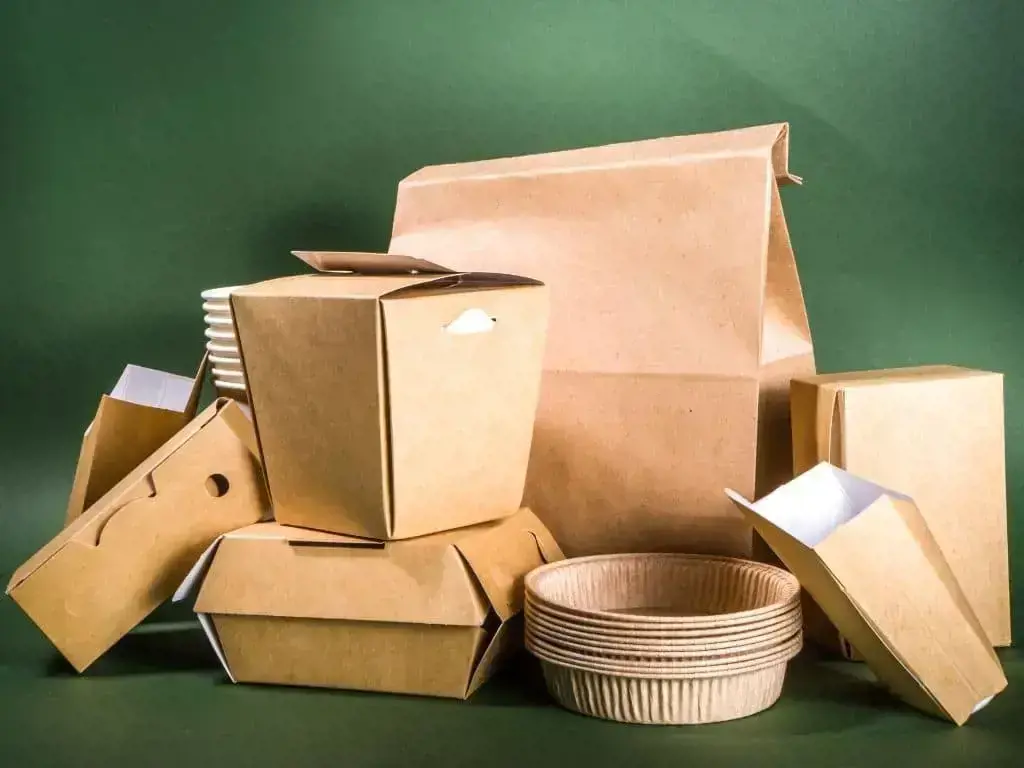
With the increasing concern for the environment, there has been a growing interest in finding eco-friendly alternatives to traditional packaging materials. Packaging plays a crucial role in protecting products during transportation and ensuring their freshness, but it often creates a significant negative impact on the environment due to the use of non-biodegradable materials. However, there are a number of innovative and sustainable packaging solutions that are gaining popularity in recent years.
One such alternative is biodegradable packaging materials. These materials are made from organic compounds such as plant-based fibers, starch, or cellulose. They break down naturally in the environment, reducing the amount of waste that ends up in landfills. Biodegradable packaging can include options such as bioplastics, which are derived from renewable sources like corn or sugarcane, or even molded pulp made from recycled paper. These materials provide similar properties to traditional packaging while being environmentally friendly.
Another sustainable packaging option is compostable materials. These materials can fully break down in a composting environment, resulting in nutrient-rich soil. Compostable packaging can be made from a variety of sources, including plant-based plastics, bamboo, or even mushroom mycelium. In addition to reducing waste, compostable materials can also help to enrich the soil and promote plant growth.
Reusable packaging is another eco-friendly alternative that is gaining popularity. Instead of using single-use packaging, reusable packaging allows for multiple uses, reducing the demand for new materials. This can include options such as glass jars, stainless steel containers, or silicone bags. By encouraging consumers to reuse packaging instead of throwing it away, reusable packaging can help to minimize waste and promote a more sustainable approach.
Innovative packaging designs are also being developed to minimize the use of materials. For example, companies are exploring the use of thinner, lightweight packaging that still provides adequate protection for the product. This reduces the overall amount of material required, resulting in a smaller environmental footprint. Additionally, packaging solutions such as air pillows or molded paper can be used as cushioning material instead of traditional plastic-based options, further reducing the use of non-biodegradable materials.
Several companies have already embraced these eco-friendly packaging alternatives. For instance, online retailers are utilizing compostable mailers made from plant-based materials, which can be easily composted by consumers. Some beverage companies are also moving away from single-use plastic bottles and introducing plant-based bottles that are both biodegradable and compostable. These examples demonstrate that sustainable packaging solutions are not only viable but also economically feasible.
In conclusion, there are several eco-friendly alternatives to traditional packaging materials that are gaining popularity. Biodegradable materials, compostable materials, reusable packaging, and innovative designs are all playing a role in reducing the environmental impact of packaging. These alternatives provide similar functionalities to traditional packaging while being more sustainable. With the increasing demand for environmentally conscious products, it is likely that these alternatives will continue to evolve and become more widely adopted in the future.
What Clothes Should I Pack for Traveling to Scotland in July?
You may want to see also

How do I determine the right size box or envelope to use for packing a package?
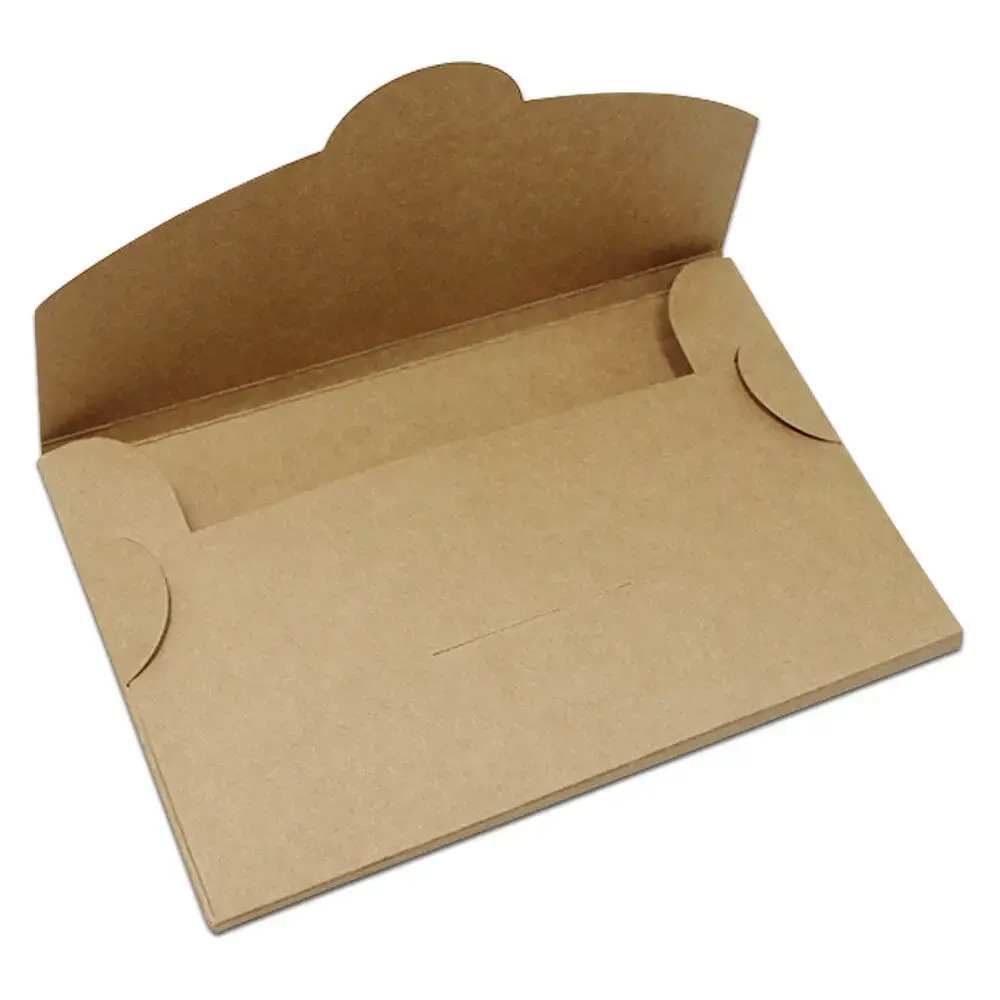
Determining the right size box or envelope for packing a package is an important task to ensure the safe and secure shipment of your items. It is crucial to choose the correct size that fits your items snugly, providing enough protection without excessive space. Here is a step-by-step guide to help you determine the right size box or envelope for packing a package.
- Measure Your Item: Start by measuring the dimensions of your item, including its length, width, and height. Use a ruler or measuring tape to get accurate measurements. Round up each measurement to the nearest inch to ensure a proper fit.
- Calculate the Dimensional Weight: The dimensional weight is a measure used by courier services to determine the shipping cost based on the size of the package rather than its actual weight. To calculate the dimensional weight, multiply the length, width, and height of your item in inches and divide the result by a dimensional factor, which is typically provided by the courier service. Compare the dimensional weight with the actual weight of your item to determine which one is higher.
- Select a Box or Envelope: Based on the measurements of your item and its dimensional weight, you can now choose an appropriate box or envelope. If the dimensional weight is higher than the actual weight, select a box or envelope that can accommodate the dimensional weight. If the actual weight is higher, choose a box or envelope that can hold the actual weight comfortably.
- Consider Padding: When selecting a box or envelope, take into account the padding material you will be using to protect your item during transit. If you are using bubble wrap or foam padding, make sure to account for the added thickness in your measurements. Choose a box or envelope that can accommodate both your item and the padding material to ensure a snug fit without excessive pressure.
- Seal the Package: Once you have packed your item in the chosen box or envelope, make sure to seal it properly. Use sturdy packing tape to secure all the edges and seams of the box or envelope. This will help prevent any accidental openings or damage during transit.
Example: Let's say you are shipping a ceramic vase that measures 10 inches in height, 8 inches in width, and 6 inches in depth. The dimensional factor provided by the courier service is 166. After calculating the dimensional weight (10 x 8 x 6 / 166 = 2.89), you find that the actual weight of the vase is 2.5 pounds. Since the dimensional weight is higher than the actual weight, you choose a box or envelope that can accommodate the dimensional weight of 2.89. After considering the padding materials, you select a box that measures 12 inches in height, 10 inches in width, and 8 inches in depth. After packing the vase with bubble wrap and sealing the box with packing tape, your package is ready for shipment.
In conclusion, determining the right size box or envelope for packing a package requires careful measurement and consideration of dimensional weight, actual weight, and padding material. By following the steps outlined above and considering practical examples, you can ensure a safe and secure packaging for your items.
Essential Items to Pack for Your Punta Cana Vacation
You may want to see also
Frequently asked questions
There are several options for packing a package, depending on the contents and the level of protection needed. Some common options include bubble wrap, packing peanuts, foam sheets, and crumpled newspaper. These materials help to cushion the items and prevent damage during transportation.
Yes, using old clothes as packing material can be a cost-effective and eco-friendly option. You can wrap fragile items in the clothes or use them to fill any empty spaces in the box. Just make sure to use clean clothes and secure them tightly to ensure the safety of the items being shipped.
Yes, there are alternatives to traditional packing materials. For example, shredded paper or cardboard can be used as eco-friendly options to provide cushioning for the items. Additionally, air pillows or inflatable packaging can be used to create a protective barrier around the contents of the package.
To ensure that your package is properly packed, make sure to choose the appropriate packing materials for the contents. Wrap fragile items individually and provide enough cushioning to prevent movement during shipping. Use strong packaging tape to secure the box and consider labeling it as fragile if necessary. It is also recommended to use a box that is the right size for the contents to avoid excessive movement inside the package.







